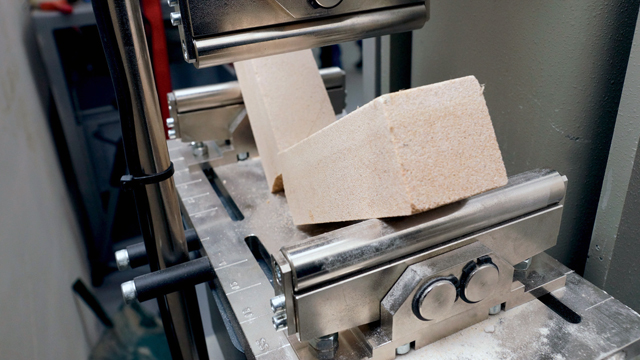PRACTICAL ADVICE FOR LABORATORY TESTS OF NATURAL STONE

The norms describe parameters that the product needs to have. These are parameters of quality concerning the treatment and parameters concerning material the product is made from. The quality of treatment concerns the precision of size, surface evenness, or the tolerance of unevenness.
Normally, it is assessed with metric tools (measuring devices and sliding scales). On the other hand, the quality of material is also assessed based on its physical and mechanical parameters, such as ultimate tension and flexural strength, pull out strength of the anchor bolts, abrasion and frost resistance, and other connected parameters, such as porosity, absorption, and capillary absorption. It is normal that the material suppliers (a mine or an importer) commissions the necessary tests at their own expenses.
The buyer should, therefore, together with the delivered stone, receive a set of tests based on the purpose of the delivered material. But as is often the case, the things often take a different course than we expect. There can be, for example, suddenly a need (or a necessity) to do new tests on the stone. That could happen for different reasons. The reason could be doubts concerning the quality of purchased material. There could be a dispute with the supplier, a dispute on many levels, including a law dispute. There could be an accident, health injury or death of an employee or a client.
According to information from the Internet, it is possible to commission the tests at many scientific laboratories and scientific workplaces all over Poland. The list of institutions that has confirmed several tests of stone that they do, can be found on the previous page. Most of them have a certificate of accreditation issued by the Polish Accreditation centre. The accreditation confirms that the laboratory has proper equipment and qualification to carry out corresponding tests. In the stonemasonry industry, there is no need to carry out the tests at accredited institutions. To prepare the documents necessary for the everyday work, the tests that are done by any laboratory that offers these services are more than enough. In certain situations, there might be a requirement for the tests to be carried out in an accredited laboratory – most often the accredited tests are required in case of a law dispute, if there is criminal prosecution or investigation of the Building Authority. In majority of other cases, the test carried out without the accreditation are enough.
It is necessary to say that if somebody offers to carry out the tests for you, it is not all. One example from real life: tests of stone were presented that had been carried out by a laboratory. Let’s leave aside whether it was an accredited laboratory or not. The equipment of the laboratory was appropriate, and the staff was qualified. But the tests that were carried out obviously did not correspond to the reality – which is a thing that gets immediately noticed by everybody who works with stone on everyday basis. The tests concerned, apart from other things, also the volume density, which means the weight of stone. The laboratory worker who carried out the test, was a specialist on concrete which was later proven to be the cause of several mistakes.
The specimens of concrete are different in volume from the specimens prepared for stone testing. From an unknown reason, the laboratory worker was thinking that the stone specimen is of the same size as a standard concrete specimen – and these proportions were used for calculations – although the difference in size was double. That was the first mistake. When testing stone, you must consider the size of each specimen because each piece can have a different size and only the results of measuring of each piece are used in particular formulae. If the laboratory worker did not overlook this measuring (which was another mistake again), he could have noticed the previous mistake. It might have been caused by the fact that the specimen for concrete testing are made by casting into prepared forms. This means that the size of each specimen is, theoretically, the same. Does that explain the fact that not every specimen is measured (yet another mistake)? The above stated example only leads to the conclusion that, although there is technical equipment and qualified personnel, there can still be mistakes caused by little practice. That is why you should always choose a laboratory that has enough experience with stone testing.
The Declaration of Performance always concerns the control of quality of the company. It is one of the names that sound reserved but in real life they point to activities that are done by every stone processing company every day. Moreover, when you are implementing various production control systems or making the custom circulation and production documentation between the workplaces, there are many companies that, without realizing, perform controlling activities that go far beyond the frame of the requirements that are placed by law on the above stated processes. Which implies, simply, that activities that have already been done need to be only slightly changed, give them a proper name (properly named bonding agent) and they will comply with the requirements of many European and Polish norms. Practical advice for laboratory testing of natural stone.
Source: Kurier kamieniarski
Author: Paweł Szambelan | Published: 28. 7. 2021
